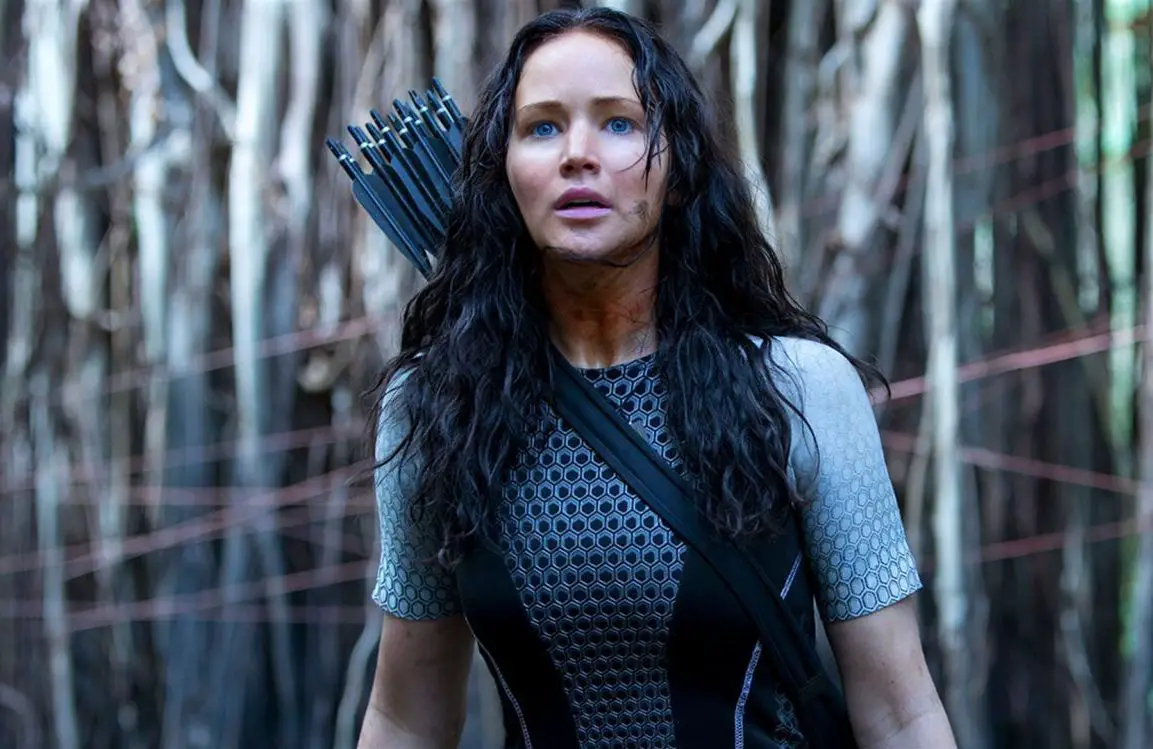Revisiting “The Hunger Games” trilogy as an adult has made me realize the novels are more than a basic young adult dystopian series. Not only did Suzanne Collins reinvent the genre as it exists today, but she used the books as a vehicle for sophisticated and striking political commentary as well.
The first book in the series introduces us to the Games, a metaphor for state violence that also highlights the socioeconomic stratification among the different districts. The first four districts are comprised of the most useful trades and are where most of the victors of the Games hail from.
The people of Panem were reduced to nothing more than what goods they could supply to the Capital, where the violence of the Games is exploited for entertainment. The Games keep the citizens of the districts at bay, while also keeping the citizens of the Capital happy. The Capital eats up the glitz and glamor of the pre-Games events, picking favorite tributes to root for, similar to how we follow the Olympics.
When Haymitch, the only victor from District 12, explains all this to his mentees, Katniss and Peeta, the duo’s wheels begin to turn. Katniss, who volunteered in place of her sister, is not exactly likable but realizes she must be personable to receive survival essentials from Capital sponsors. Peeta, who is strong but not confident in his ability to win the Games — and who is also in love with Katniss — comes to the same realization. This inspired him to reveal his love for Katniss during his interview with Caesar Flickerman, making the Capital crowd go wild.
At the end of the 74th Hunger Games, Katniss and Peeta both win, using their artificial love story, and the threat of double suicide, to put pressure on the Capital to allow two victors. With Katniss outsmarting the Capital; showing kindness to Rue, a fellow tribute; and initially volunteering for her sister; she unwillingly becomes the face of a revolution.
With the next two books in the series, “The Hunger Games” artfully succeeds in doing what its fellow young adult dystopian novels, “Divergent” and “Matched,” fail to do — it takes us into the intricate inner workings of a revolution.
“Catching Fire” starts with Katniss and Peeta’s victory tour, during which they are told to act as if they are star-crossed lovers. They see signs of the rebellion all throughout the tour — graffitied mockingjay symbols similar to Katniss’ pin, the whistle signal she shared with Rue, and three-fingered salutes like the one Katniss gave to the camera after burying Rue.
After the tour, President Snow announces the new Quarter Quell rule for the 75th Hunger Games — the tributes are to be previous victors from each district — a rule that would allow him to eliminate Katniss and her whole “species” of victors. During the spectacles of the pre-Games, the victors held hands as a sign of unity within the districts, further fueling the revolution. Peeta drops another drama bomb during his next interview, revealing that he and Katniss are expecting a baby.
Even Capital citizens are now rallying for Snow to cancel the upcoming Games, yet still, they proceed. During the Games, we see many of the tributes sacrifice their safety and even their lives to ensure both Katniss and Peeta survive.
At the end of the second book, Katniss destroys the arena but is knocked unconscious. She wakes up in District 13 — a district thought to have been destroyed — alongside a few other tributes from the 75th Games, except for Peeta, who is still in the Capital. She’s told that District 12 has been destroyed, but her family, and best friend — maybe lover — Gale are alive and well.
In “Mockingjay,” we meet President Coin, the leader of District 13 and the revolution. She and her colleagues use Katniss as their propaganda figure, sending her to different districts to film videos inspiring the people to rise up against the Capital’s oppression. Here, we really begin to see that Katniss never signed up to be a hero.
As a teen, I saw her as a cool and reluctant feminist leader taking on the injustices of the world that she lived in. While this is still true, I was enraged as I reread the abuse Katniss endures at the hands of both the Capital and District 13.
After successfully infiltrating the Capital, Katniss learns from President Snow that Coin is not a better leader than he was, as she arranges for an attack that targets innocent Capital citizens — claiming the life of Katniss’ sister in the process — and then frames Snow for it. Katniss realizes that Snow wasn’t bluffing; the bombs used during the attack were ones that Gale designed.
Coin later proposes a final Hunger Games, in which Capital children will be the tributes. At the end of the trilogy, Katniss uses her opportunity to kill Snow to instead kill Coin in an attempt to end the abuse of power in Panem.
Despite the series’s potent political tropes, its popularity among young female readers, combined with the Peeta-Katniss-Gale love triangle, often causes it to be dismissed as childish. Realistically, the relationship between Katniss and Gale is a perfect demonstration of how our personal experiences shape us.
Katniss and Gale were, at first, inseparable, but over the course of the series, they became estranged. Their reactions to the violence they faced gradually caused them to grow distant. Peeta was the only person who could understand what Katniss was going through — becoming the safe place that Gale once was to her. Peeta was one of the smartest characters in the novels; he was a skilled speaker, and every move he made was calculated.
The media’s focus on the love triangle proves Collins’ point. Much like what the Capital wanted from the citizens of Panem, critics fixated on the romantic elements of the novel instead of the books’ revolutionary messages.
















